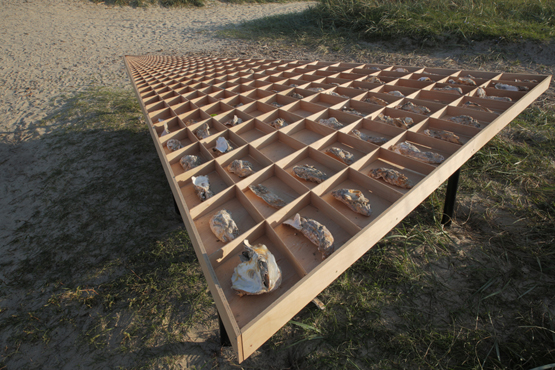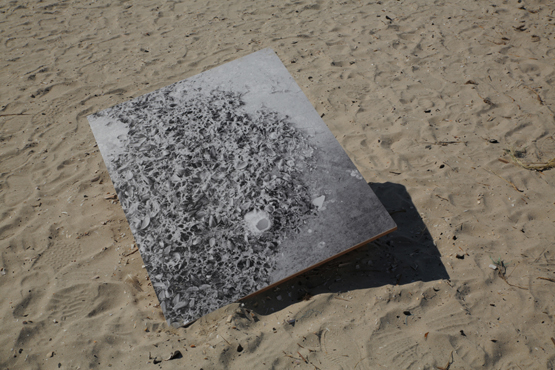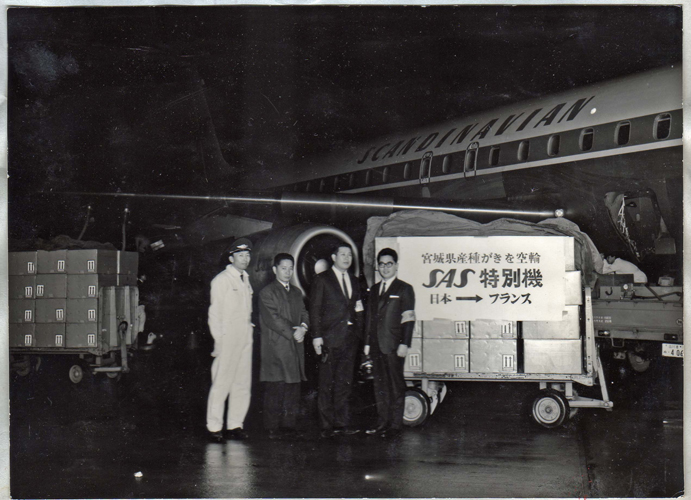Outdoor Installations
Denmark 2014
Work commissioned by Wadden Tide.
The project is shown with three different platform –
A Triangler grid table, A Photography installation, A Video documentation
Inspired by an ecological story, Takeuchi explores interesting consequences that nature create for us. She investigates how humans deal with natural phenomenon, which is actually created through human interventions to nature in a course of history.
Pacific Oysters were introduced from Japan to Europe, when native European Flat Oysters were disappearing due to overfishing and disease in France. Twenty boxes containing larvae flew from Miyagi prefecture to France in 1966. Then, a major export of seed oysters from Japan to France was taken from 1970 and to 1979. In the peak period, specially chartered jumbo aircraft containing only boxes of seed oysters flew every single day. Pacific Oysters became the savior for French commercial industry and the dramatic export business brought enormous economical rise to the fishermen in Miyagi. Over the twentieth century, Pacific Oysters succeeded to migrate in Europe, in fact all over the world.
On 11th March 2011, the Tsunami hit North East Japan. Miyagi were also caused immense damage. Most of fishery as well as their people were wiped way. Thus oyster farmers also had to start the cultivation from zero. After three years past, most of the production means have recovered with great helps of national and international charity activities. Particularly, French oyster industry contributed the economical help immediately. However, sales of Miyagi oysters haven't recovered as good as the production, due to many factors.
Here, in one end of the earth in Wadden sea; the successful migration of Pacific Oysters became slightly problematic for people, because they have been rapidly invading native blue mussels' colony, notably since 2003. Although major harmful effects weren't found yet, the dramatic invasion of the foreign species worries researchers and authorities. E.g. compared to the native mussels, the oysters' shell are too strong for birds or other animals, which consequently could damage the ecological cycle. Another minor worry is about the sharp edge of the shells, that might harm tourists' feet. What Takeuchi found interesting is that these concerns regarding oysters have turned out to become a popular tourist attraction in Danish Wadden sea.
Takeuchi embarked on several paths within the project: organizing an event of Oyster Safari with locals, collecting oral stories about the seed oysters export in the sixties and seventies, and documenting the oyster cultivators' in Miyagi, Japan.
The project is realized with the financial support by Wadden Tide and Stroom Den Haag.


